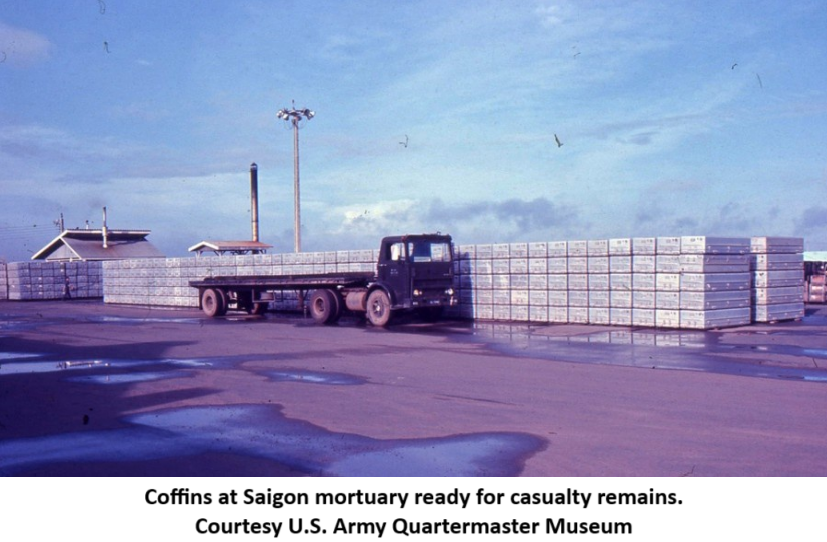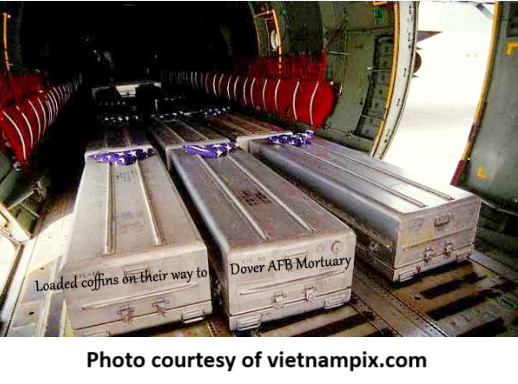
Fred was one of our masterful and wiser Advisors in our Advisory Team 99. I believe he is about my age give or take a year or two, but his wisdom was in maintaining a detailed journal of life with the team. Interestingly, Fred and I followed similar paths later in life and both took Bachelors in Business Management and Masters in Public Administration degrees. When I found Fred online about June 2009, we began a dialogue that caused me to again withdraw from life after reliving the memories of the tragic months we spent with the team. Below is an email in response to my asking for forgiveness after breaking communication and details a terrifying incident during one of our many attacks at Advisory Team 99.
Fred kept a detailed journal with names, dates and events while with the team. I was never that farsighted and lived for the moment never considering there would be life after Advisory Team 99. My story would have been much more detailed if I had kept a journal similar to Fred’s. Fred is working on his own book, so we exchanged personal stories of our involvement in the Vietnam fiasco. He included some of my own stories in his book, and I did likewise. Following is a tribute to Fred’s writing skills and his ability to articulate in writing the lethal wounds and tragic combat casualties we all witnessed.

Lieutenant Colonel Jungerheld came by. He was checking to see if there were any casualties and to ensure the bunkers were occupied. First Sergeant Leong came by. He said he needed some men to help evacuate casualties. Ed and I leaped out of our bunker and followed him. As we passed Tom’s bunker, he jumped out and followed us.
We went to the dispensary where casualties were laying on stretchers or squatting all around on the floor. Naked and partially clothed bodies were everywhere. What was left of Sergeant Hodges, a Power-Generation Equipment Repairman, was lying on a stretcher on the floor. The doctor was tending to him as best he could. It was a terrible sight. Hodges was desperately trying to breathe, and with each breath it sounded like he swallowed his own blood. A pool of blood collected in the middle of the floor, the blood of American soldiers. Off to the side of the room was a pan of flesh that had been blown or cut away from American soldiers. As I watched, the doctor carved a piece of flesh from Hodges and tossed it in the pan. It was a gruesome experience. I was glad when the sergeant told us to wait outside.
★ Lee Roy Hodges, Staff Sergeant, Advisory Team 99, Headquarters, MACV Advisors, MACV, Army of the United States, from Memphis, Texas; 16 Sep 1939 – 16 Oct 1967 (28 years 1 month old); Lee Roy is on the Vietnam Memorial Wall at Panel 28E Line 015. This data is from www.virtualwall.org
★ James Edward Middleton, Staff Sergeant, D Company, 44th Signal Battalion, 160th Signal Group, 1st Signal Brigade, USARV (United States Army Republic of Vietnam) Army of the United States, from Grandview, Indiana; 23 Jan 1937 – 16 Oct 1967 (30 years old); James is on the Vietnam Memorial Wall at Panel 28E Line 016. From www.virtualwall.org
We were ordered to search the hooches and look for other casualties so we did. No other casualties were found. We returned to the infirmary and waited for further instructions. Flares lit up the sky to noontime brilliance. Firing and shelling continued. One flare lit up the dispensary and we who waited, and that is when I saw the stretcher laying up alongside the building. Sergeant Middleton, a Field Radio Repairman, from the 44th Signal Battalion was lying on the stretcher. He appeared to be asleep there was a half-smile on his lips. The doctor came out of the dispensary with a flashlight in his hand. He knelt over Middleton for a moment, then, silently; he covered the sergeant’s face and returned to the dispensary.
We took turns moving casualties down to the chopper pad to await evacuation. When we weren’t moving the wounded and dead, we stood around like zombies waiting for further instructions. Dawn was breaking when the Doctor came out and told us we would not be needed any longer. There were only two of us left by then. Colonel Arntz came by and told us we could return our hooches – the attack was over.
The yellow sun rose into a cloudless blue sky. The silence was deafening. Later that morning we began to put the pieces together. The first round to hit the compound landed in the hooch where Middleton and Hodges were sleeping. Middleton died instantly. Hodges was mortally wounded; he died at Long Binh Hospital at 0735 this morning. The other casualties, Johnson, Heater, and Ingrahm, were wounded by shrapnel. There were seven casualties from this compound and two from the Special Forces compound over at Camp Swampy. The Civilian Irregular Defense Group (CIDG) suffered 17 casualties – among them, a six-month-old baby. Army Of the Republic of Vietnam (ARVN) forces suffered twenty-two casualties. Every compound around this area was hit: Camp Swampy, CIDG, ARVN, Advisory Team #99, the 10th Cavalry, the helicopter pad, and the 49th ARVN Regiment. Everyone suffered. It was one hell of an experience. Later we found out from our hooch maid, Ba Cai, that the citizens of Duc Hoa had been hit bad too. She knew of several men, four women, and two babies that had been killed during the long night. I think we don’t know how many others are gone. That makes about fifty-six casualties last night that we know of: nine Americans and forty-seven Vietnamese including women and children. I don’t know how many Viet Cong bought the farm; I wasn’t part of the cleanup crew. We’ll find out later.
When we found some time this morning, Tom and I walked around a changing compound. The Vietnamese workers were on the job already tearing down and rebuilding hooch 22, the one that took a direct hit. The hooch maid was sweeping up the blood. People were returning ammunition and grenades to their rightful places. We found a big hole out by the generator; whatever made it was not a mortar. There was a dud mortar round over by hooch 36.
Everywhere were tired and unshaven workers and troops. Part of the school house wall across the street was blown out. "Doc" Neal was sweeping the blood off the sidewalk in front of the dispensary. There was blood on many of the sidewalks, but it was left to wear off.
I think the troops at Pohl Compound have bonded. There are no virgin soldiers here this morning. Together we have met the enemy and we set a good example to our counterparts in the process. When the attack came, we did not blink. We responded as we have been trained, quickly and with dispatch. Uh, that is, when I wasn’t standing around looking stupid and wondering what to do next. Seriously, though, some Vietnamese units that were larger and better equipped have been wiped out because they did not stand together and respond properly to the occasion. Americans learned early, as Thomas Paine said, “If we do not hang together, we shall surely hang separately.” The Vietnamese would do well to learn the same lesson.
Down at the helicopter pad some of the J-4 fuel tanks caught fire, and a huge billowing black cloud swept over the compound. We feared we were under attack again and thought we had lost aircraft. Later we discovered it was a fuel fire, it did not spread and it was eventually put out. You have to go through the ARVN 25th Infantry Division compound to get to our chopper pad so the Vietnamese got to clean up the mess.
G-2 says the attack had the precision of the Local 269th Duc Hoa Viet Cong Battalion. On the other hand, the Girl Scouts at Camp Swampy, about a mile from here seem to think it was the North Vietnamese Army. That would be depressing if it were true. Some think the mortars that hit us were not mortars at all but 75mm recoilless rifles, firing indirect fire. That could be depressing too. Tonight may be sleepless.
As of October 19th the final score of dead Americans is three: Middleton, Hodges, and Jarvis. Jarvis lived until 1545 hours the day of the attack with half his face blown away.
★ Roger Ellis Jarvis, Sergeant First Class, Advisory Team #99, Headquarters, MACV Advisors, MACV, Army of the United States, from Moline, Illinois; 20 Feb 1930 – 16 Oct 1967 (37 years old); Roger is listed on the Vietnam Memorial Wall at Panel 28E Line 013. This information is from www.virtualwall.org. The virtual wall states he died in Binh Thuy Province but I am fairly sure he is the Jarvis I wrote about in my journal.
All the rounds that hit Pohl Compound were 75mm recoilless rifle rounds from Chinese Communist weapons. G2 (Intelligence) believes one gun was set up down by the Horse Shoe. No one else received recoilless rifle fire. Camp Swampy was hit with 82mm mortar fire, and the rest were hit with 60mm mortar fire. Total casualties for the area hit sixty-seven. Green Berets occupy Camp Swampy. A G-2 source said today that ninety Communist rockets have been found in this area. Tonight a double guard is being posted. What could Charlie (Viet Cong) be up to?
Advisory Team #99 has ten new M-60 machine guns. MACV is not authorized M-60 machine guns. They are the newest things in the way of light machine guns, but we are issued the old, left over from WWII and Korea .30 caliber machine guns. However, our neighbors, the 44th Signal Battalion, who share this compound with us, was found to be in possession of ten crated M-60s. They are under the command of USARV (United States Army, Republic of Vietnam). They didn’t even have them unpacked when we got hit.
Well, Colonel Arntz, our tall, lean, stone faced, weather beaten paratrooper commander was slightly perturbed when he found unpacked machine guns in his compound. Whoever received those machine guns in a combat zone and did not open them immediately, is guilty of possessing not a shred of common sense. If you'll excuse the expression, “shit hit the fan”. By 1730 hours on the 19th Pohl Compound's ten brand new M-60 machine guns were set up around the perimeter, and Sergeant Chubbs had a wheelbarrow full of ammo to distribute.
Today there was a practice alert. Nobody complained. I checked my bunker to be sure there was .30 caliber ammo there. I was issued a WWII M-2 Carbine with two banana clips so I am always looking for more ammo. Tonight we are ready for Charlie. I go on guard duty in the morning from 0130 to 0400 hours.

Fred did a masterful job of capturing the horror and misery we all experienced that night and several other nights which followed. Fred's descriptive narrative is so spot-on that it still gives me chills every time I read it some fifty-plus years later. Good memories gradually fade. Bad memories never do.


©Copyright texan@atudemi.com - January 2022